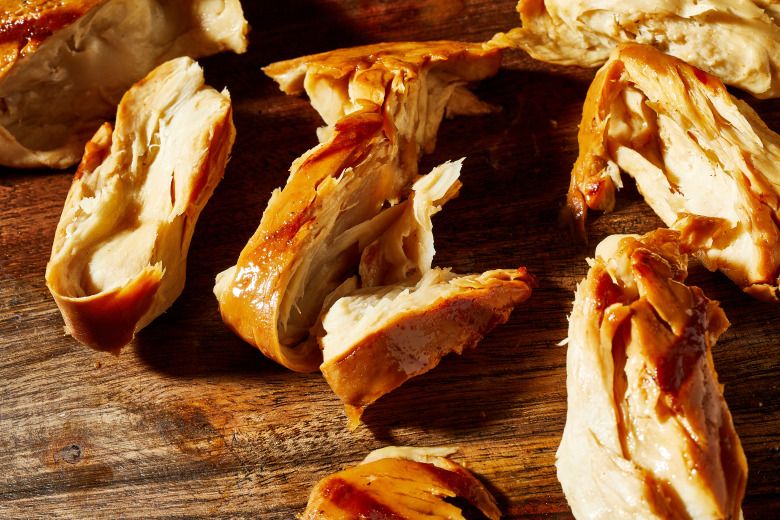- Cultivated meat is edging closer to commercialization in the US as GOOD Meat becomes the second startup to secure a ‘no questions’ letter from the US Food and Drug Administration (FDA) affirming the safety of its process for growing chicken from cells, outside of the animal.
- The letter was issued four months after fellow Bay Area-based startup UPSIDE Foods received a ‘no questions’ letter from the FDA for its cell-cultured chicken.
The first company in the world to launch cell-cultured or ‘cultivated’ meat via a small-scale operation in Singapore, GOOD Meat (the cultivated meat division of Eat Just) has just installed a 6,000-liter bioreactor for cultivated meat at a new facility in Singapore, which is “nearing completion.”
It plans to produce cultivated chicken products for the US market later this year from a 3,500-liter bioreactor in Alameda, California, pending approval from the US Dept of Agriculture (USDA).
In the US, the FDA regulates cell collection, banking, growth and differentiation for cultivated meat and poultry. Regulatory oversight then switches to the USDA once the cells are harvested and through the processing and labeling stages.
GOOD MEAT must now obtain a grant of inspection from USDA for its facility in Alameda and secure a mark of inspection and label approval before its products can hit the market.
“The key takeaway here is that with this landmark decision, we are now the first company with cultivated meat approvals in two countries – the US and Singapore,” Eat Just VP and head of global communications Andrew Noyes told AFN. “And we’re the only company in the world that has ever sold to consumers.”
The production process
So how is GOOD Meat making its products?
According to a scientific memo released by the FDA today, GOOD Meat is using a chicken fibroblast cell line initially isolated from mid-stage fertilized chicken eggs in an antibiotic-free production process.
The generation of immortalized cell lines (cells that will proliferate indefinitely), is described in the now-expired US Patent 5,672,485.
According to GOOD Meat’s safety dossier, GOOD Meat’s cells are “not recombinant or engineered (i.e., non-GMO) and have not been exposed to any viruses or viral DNA” while tests “indicate that the starting cells used for cultured chicken do not have tumorigenic potential.”
“In summary,” concluded the FDA, “we did not identify any properties of the cells as described that would render them different from other animal cells with respect to safety for food use.”
‘Cell paste’
According to the FDA, GOOD Meat induces the ability for its adherent cell line to grow in suspension through selective culture “in the presence of bovine [ie. animal] serum,” which some commentators argue defeats the purpose of growing cultivated meat, although cells are “further selected for their ability to grow in lower levels of bovine serum.”
The cells are then harvested by centrifugation and washed prior to frozen storage as a “cell paste.”
The paste is “intended to be utilized as a human food ingredient to be mixed with other food ingredients” to make products such as chicken bites and boneless chicken breasts, said GOOD Meat, which combines cell-cultured and plant-based meat in its products sold in Singapore.
‘Our team will be pursuing an amendment for serum-free media with the FDA’
Asked about bovine serum, Noyes told AFN: “Today’s FDA clearance, which was years in the making, involved a chicken cell line that is produced with a very low level of animal-derived nutrients that are effectively removed through the harvesting and washing procedure. Like in Singapore, our team will be pursuing an amendment for serum-free media with the FDA.”
He added: “GOOD Meat’s R&D operations have been free from animal-derived nutrients for over three years, and in January, we received the world’s first approval for serum-free media in Singapore, where we’ve been selling our cultivated chicken for more than two years. Moving to non-animal derived nutrients will not only lead to greater scalability and lower manufacturing costs, but also a more sustainable product.”
“Global demand for meat is projected to increase significantly by 2050. A few governments around the world are beginning to prioritize alternative proteins as a solution that accounts for this growing consumer demand while also achieving national climate and development goals, but far more need to follow suit.” Bruce Friedrich, cofounder, The Good Food Institute

The ‘largest known bioreactors for avian and mammalian cell culture’
Eat Just, which has just laid off 18% of staff at its Just Egg plant-based egg business, runs GOOD Meat as a separate division within the company that will need to raise more money if it wants to build a large-scale plant in the US, said Noyes.
“We have not yet finalized the location. A facility of this size will require hundreds of millions of dollars.”
GOOD Meat hit the headlines last year after signing a deal with bioprocess equipment specialist ABEC to build the “largest known bioreactors for avian and mammalian cell culture” at 250,000-liters, uncharted territory for avian and mammalian cell culture, acknowledged Eat Just founder Josh Tetrick.
“Does that mean that I or my CTO or ABEC are 100% certain that this will work in a way that we want it at large scale? No, it definitely does not. But it means we think there’s a high probability of success,” he told FoodNavigator-USA last year.
For cell-cultured meat to be viable at scale, he said, “We think vessel size needs to be north of 200,000 liters, cell density needs to go up, and media costs need to be in the cents, not dollars.”




